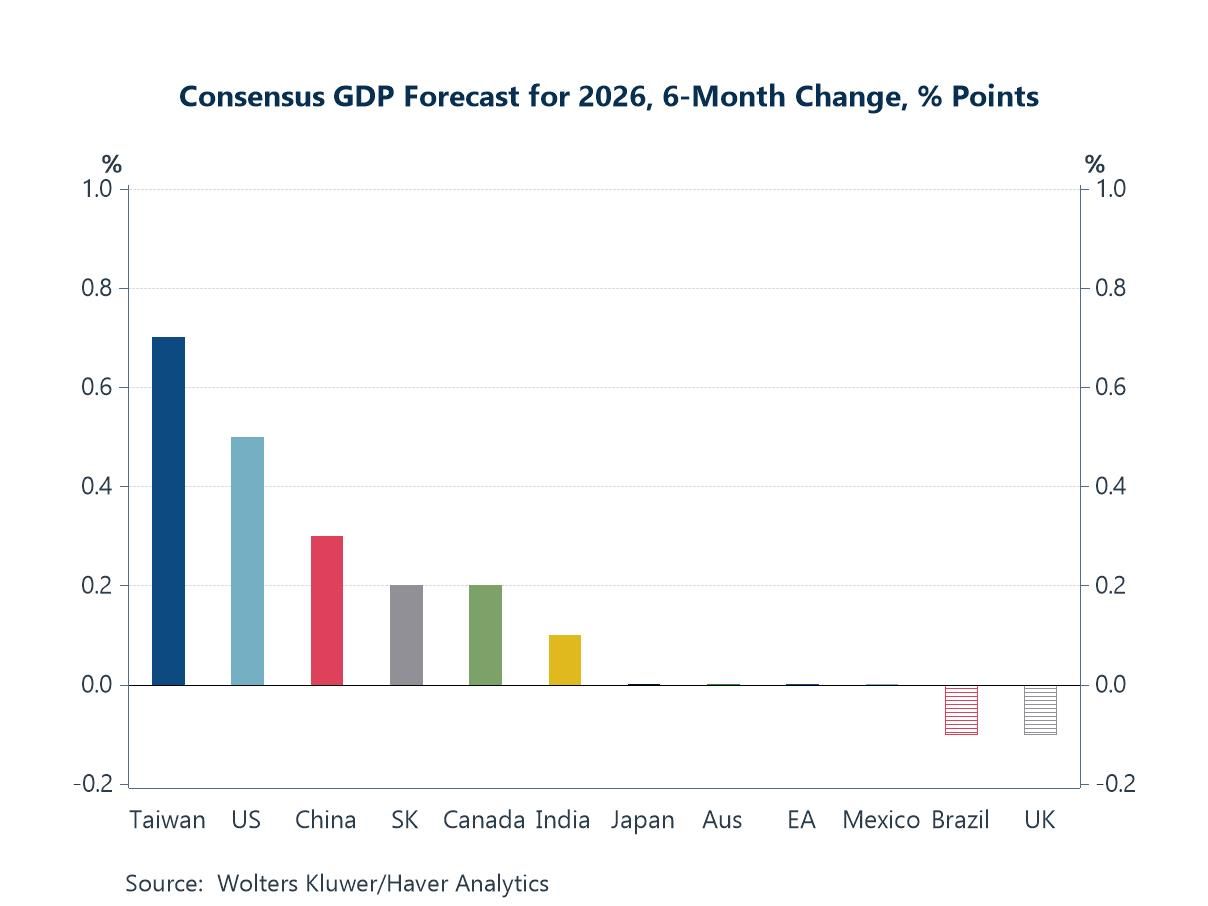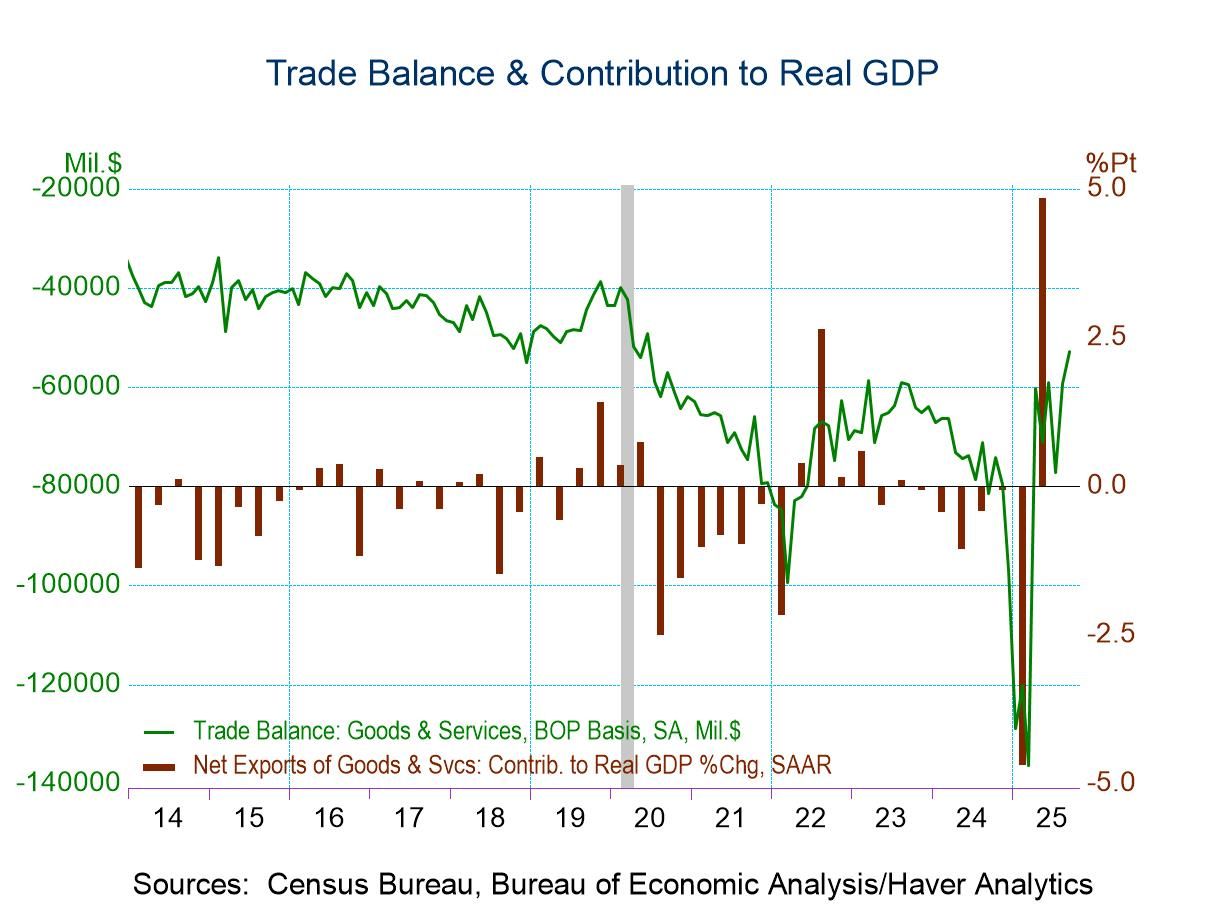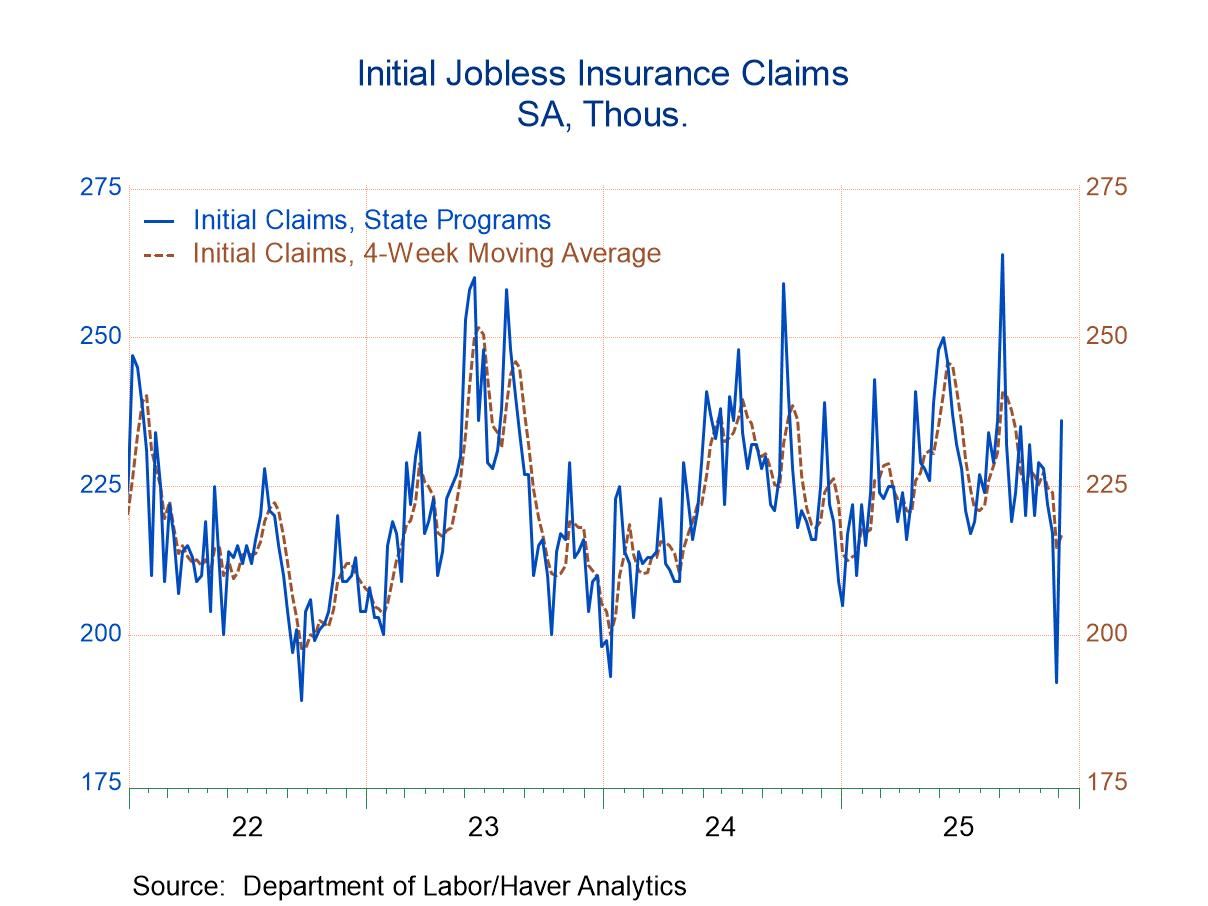U.S. Job Growth Nearly Doubles in January
by:Tom Moeller
|in:Economy in Brief
Summary
- Largest monthly payroll gain seen in six months.
- Earnings growth moderates.
- Jobless rate falls to 50-year low.


Nonfarm payrolls increased a surprisingly strong 517,000 (3.3% y/y) in January following upwardly revised increases of 260,000 and 290,000 in December & November. Expectations had been for a smaller 185,000 rise in the Action Economics Forecast Survey.
Average hourly earnings gained 0.3% last month, after rising 0.4% in each of the prior three months. A 0.4% January rise had been expected. The 4.4% y/y earnings gain remains above its pre-pandemic rise of 2.9% y/y, as competition for labor has increased.
The unemployment rate, measured in the household survey, fell to a roughly 50-year low of 3.4% last month versus an expected rate of 3.6%. Household employment rose 894,000 (1.9% y/y) after a 717,000 gain. The labor force rose by 866,000 (1.3% y/y), below its year-to-year high of 2.4% last March. The overall unemployment rate, including workers who were marginally attached & working part-time for economic reasons, rose to 6.6% from 6.5%.
In the establishment survey, private-sector employment rose 443,000 (3.6% y/y) after a 269,000 December increase. Factory sector jobs rose 19,000 (3.0% y/y) after a 12,000 gain. Construction sector employment increased 25,000 (4.1% y/y) following a 26,000 December improvement.
Private service-producing sector employment increased 397,000 in January (3.7% y/y) after improving 226,000 in December. Increases varied greatly amongst service sector categories. Leisure & hospitality employment rose 128,000 (7.3% y/y). Education & health care jobs rose 105,000 (4.4% y/y) while trade, transportation & utilities employment firmed 63,000 (1.8% y/y).
Government sector payrolls rose 74,000 last month (1.5% y/y) after falling 9,000 in December. Local government jobs increased 30,000 (2.2% y/y). State government employment rose 39,000 (0.3% y/y). Federal government payrolls edged 5,000 higher (0.2% y/y).
Private-sector average hourly earnings rose 0.3% in January. Earnings in the goods-producing sector rose 0.4% (4.2% y/y). Earnings in construction rose 5.5% y/y followed by a 3.2% y/y gain in the factory sector. In the private services-sector, earnings rose 0.3% (4.5% y/y). The 7.0% y/y rise in leisure & hospitality earnings remained below the 14.0% December 2021 peak, while professional & business sector earnings increased 4.5% y/y. Financial activities earnings rose 3.9% y/y.


The length of the average workweek increased to 34.7 hours in January. The workweek in the goods-producing sector lengthened to 40.2 hours. The construction sector average workweek rose to 39.2 hours while the factory sector workweek increased to 40.5 hours. The average workweek in the private service sector improved to 33.6 hours and remained below the 34.0 hour high in early-2021. The aggregate weekly hours index, a key indicator of production and income, rose 1.2% (4.0% y/y) after easing 0.1% in December.
The household survey indicated a decline in the jobless rate to 3.4% as the size of the labor pool rose. The labor force participation rate rose to 62.4% last month 62.3%. It remained below the high of 63.3% early in 2020. The rate for teenagers rose to 37.2%. For workers aged 20-24, the rate rose to 71.5% but remained below a 71.9% December, 2021 high. For workers aged 25-54, the rate edged up to 82.7%. It as below the 83.1% high in January 2020. For individuals 55 and over, the rate eased to 38.7%.
The employment/population ratio for all workers in January improved to 60.2% and remained above the 59.7% level twelve months earlier. It is still below its reading of 61.1% in February, 2020 just prior to the pandemic.
The average duration of unemployment rose in January to 20.4 weeks but it remained below a 32.0 week high in June of 2021. The median duration of unemployment edged higher to 9.1 weeks but stood below its 19.9 week high in June 2021. The ranks of those individuals unemployed for 27 weeks or more rose 3.9% but was down 34.0% y/y.
Changes to The Employment Situation Data from BLS: Establishment survey data have been revised as a result of the annual benchmarking process, the NAICS 2022 conversion, and the updating of seasonal adjustment factors. Also, household survey data for January 2023 reflect updated population estimates. See more info here.
The employment and earnings data are collected from surveys taken each month during the week containing the 12th day of the month. The labor market data are contained in Haver's USECON database. Detailed figures are in the EMPL and LABOR databases. The expectations figures are in the AS1REPNA database.


Tom Moeller
AuthorMore in Author Profile »Prior to joining Haver Analytics in 2000, Mr. Moeller worked as the Economist at Chancellor Capital Management from 1985 to 1999. There, he developed comprehensive economic forecasts and interpreted economic data for equity and fixed income portfolio managers. Also at Chancellor, Mr. Moeller worked as an equity analyst and was responsible for researching and rating companies in the economically sensitive automobile and housing industries for investment in Chancellor’s equity portfolio. Prior to joining Chancellor, Mr. Moeller was an Economist at Citibank from 1979 to 1984. He also analyzed pricing behavior in the metals industry for the Council on Wage and Price Stability in Washington, D.C. In 1999, Mr. Moeller received the award for most accurate forecast from the Forecasters' Club of New York. From 1990 to 1992 he was President of the New York Association for Business Economists. Mr. Moeller earned an M.B.A. in Finance from Fordham University, where he graduated in 1987. He holds a Bachelor of Arts in Economics from George Washington University.





 Global
Global
